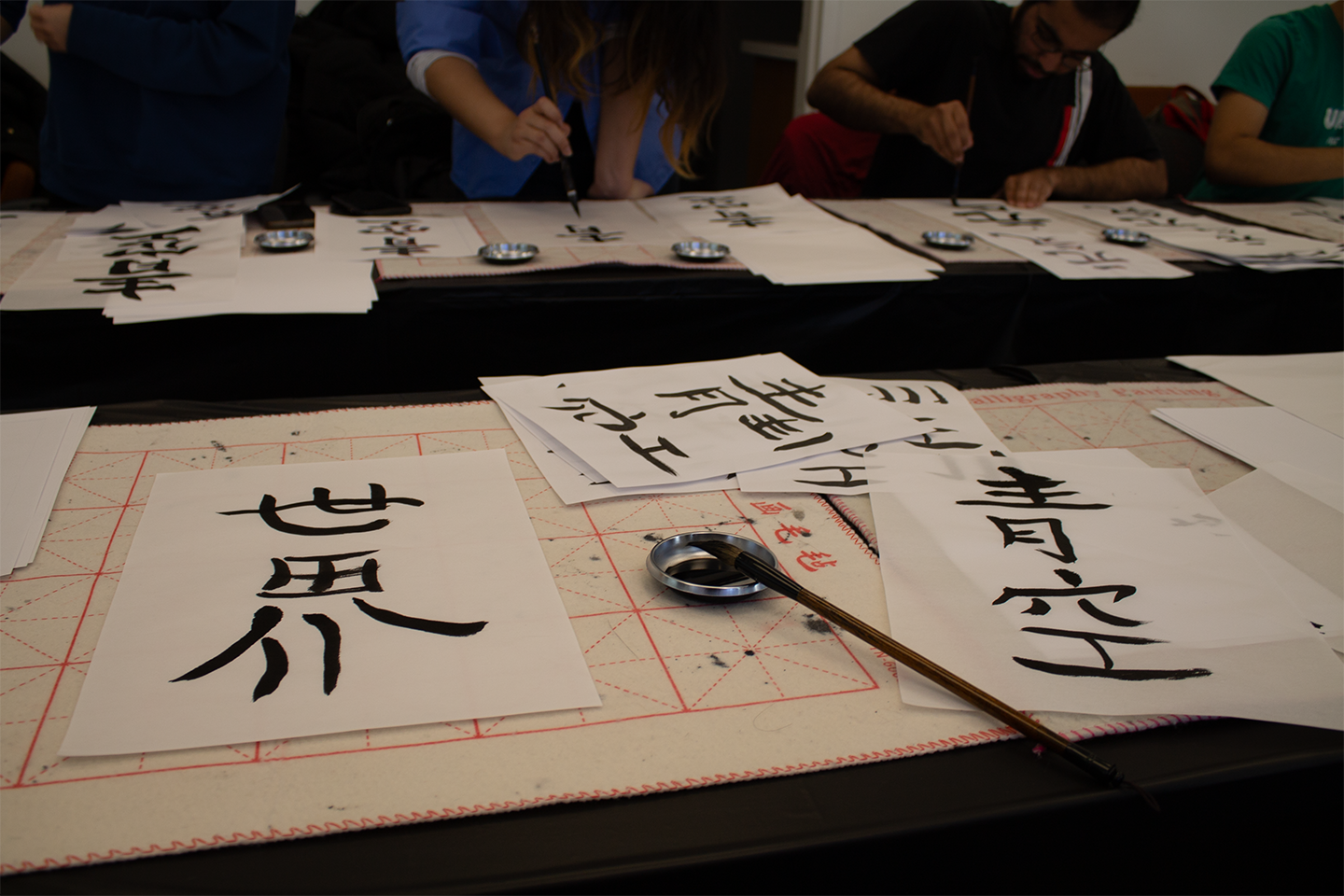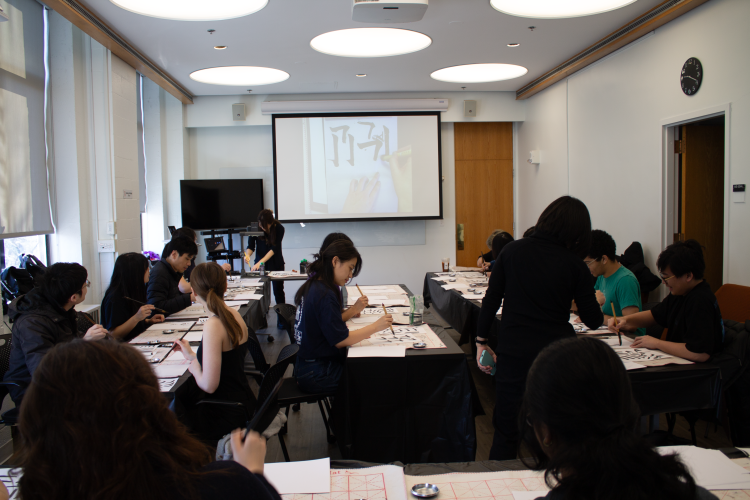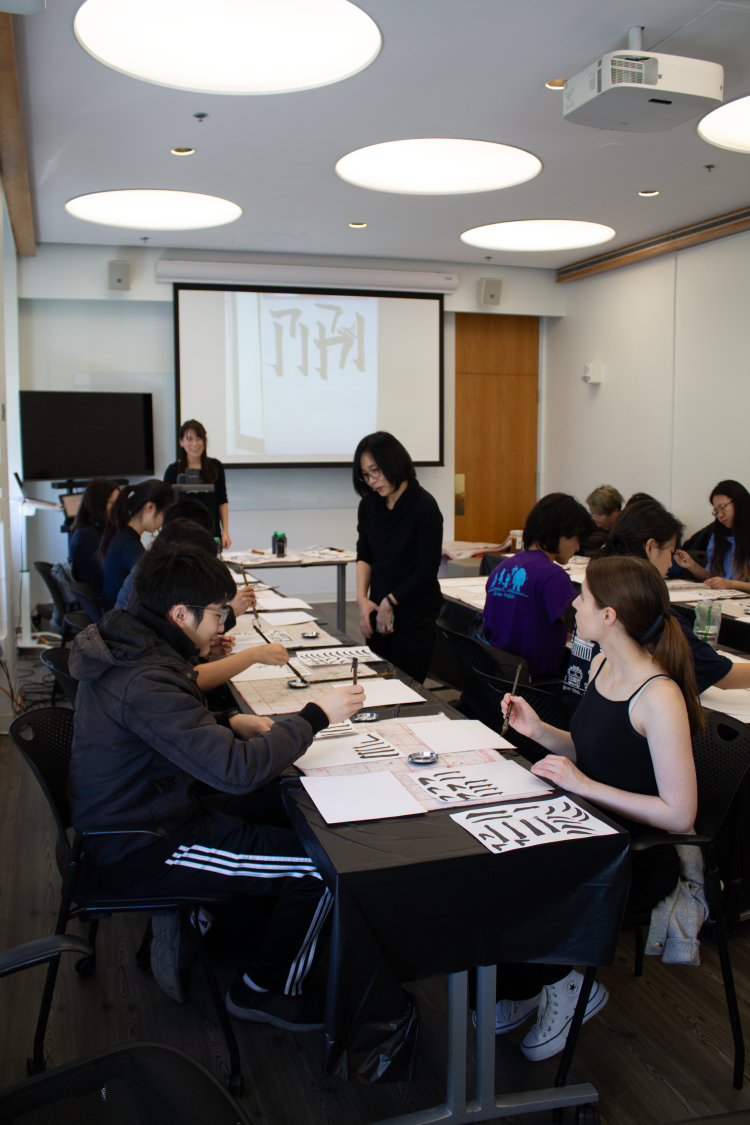
The art of writing beautifully has been important to Japanese culture ever since Japan imported Chinese characters to form their own new writing system in the fifth century C.E., which means there have been over a thousand years of development of calligraphic styles, ideas, and materials. Japanese instructors Wakana Maekawa and Masami Ikeda held a hands-on workshop on February 28th, 2025, taught in Japanese, to introduce their beginning Japanese students to a small part of this great and complex art form. There were three sessions of the hour-long workshop, each including about twenty students.
Every student’s workspace had a calligraphy practice mat, a small dish filled with deep black calligraphy ink (sumi), and an approximately six-inch-long writing brush (the fude), as well as plenty of practice paper. Unlike English calligraphy pens and brushes, the fude is held vertically to the paper at a ninety-degree angle, straight up and down, with the width of the stroke controlled by the writer raising and lowering their arm, and not by finger or wrist movement. Using an overhead projector, Professor Maekawa demonstrated how to hold the fude, how to saturate its bristles with sumi, and some basic strokes: vertical, horizontal, and several different curves and angles. The appearance of the ends of the strokes, where the brush leaves the paper, is both important and difficult to control, so students were given most of the allotted time to practice. Finally, each student was given sheets of high-quality calligraphy paper and allowed to do their best to copy any of several sample characters to create a finished piece, choosing between words and phrases meaning things such as ‘cheerful happiness’ and ‘good luck’. Students posted their finished work on the internet, and each workshop session took a group picture in which the students held up their best efforts for display.
The students were enthusiastic and attentive, conversing and asking questions in Japanese with full immersion, and behaving carefully with the sumi and respectfully towards the high-quality paper. Of course, the workshop could only begin to demonstrate the very basics of calligraphy, but the exposure to an entire new world of aesthetics was enriching, enlightening, and enjoyable for everyone.


